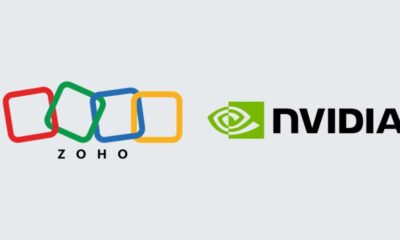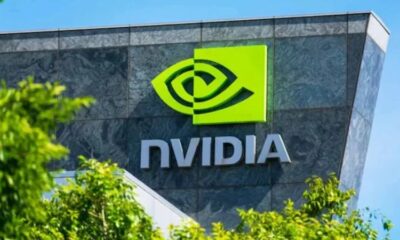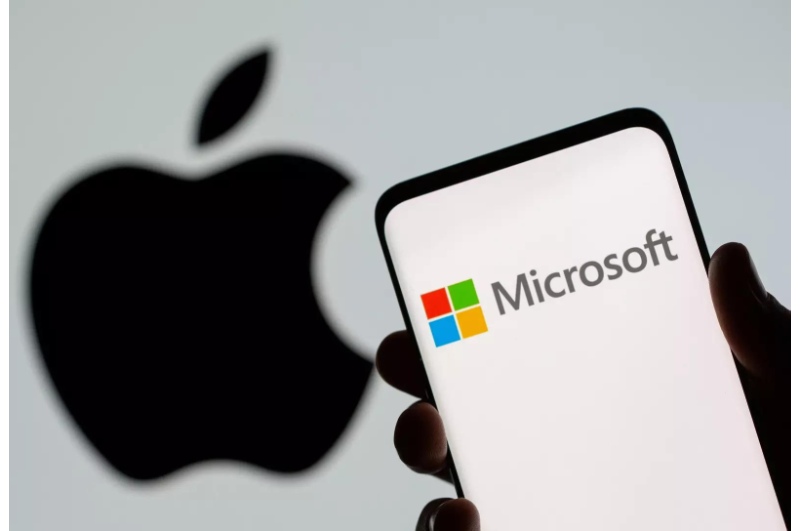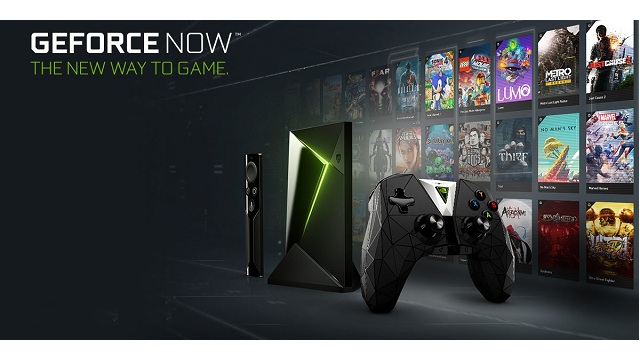Business
Nvidia Becomes The Most Valuable Company In The World
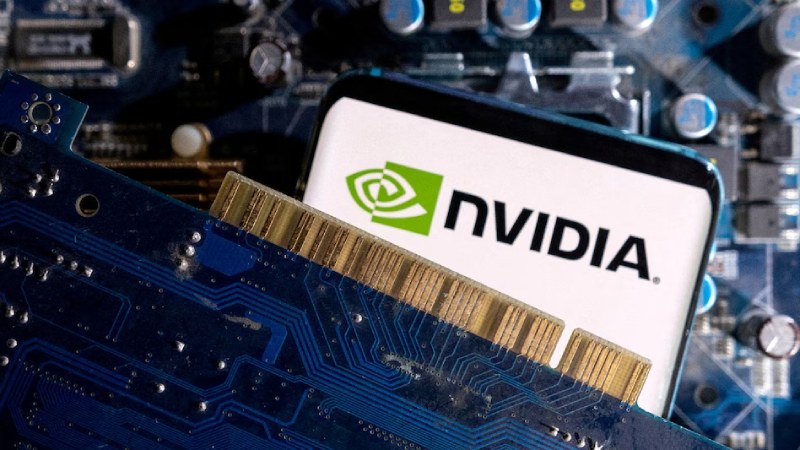
Right now, Nvidia is the world’s most valuable company. This is how it went from having a booth at Denny’s to controlling the market for AI chips.
Thanks to strategic decisions made years ago that allowed it to corner the market for AI chips, semiconductor giant Nvidia this week became the most valuable company in the world.
Long before it rose to the pinnacle of the corporate world, CEO Jensen Huang and cofounders Chris Malachowsky and Curtis Priem came up with the idea for Nvidia in a Denny’s booth. The company created one of the first graphics processing units (GPUs) soon after it was established in 1993, initially for use in graphic design and video games.
Since then, with its $3.34 trillion market cap—which has more than doubled since January—the company has increased its aspirations and grown into its name, which is a play on the Latin word for envy, by undermining tech giants like Apple, Microsoft, and Google. How did it get here, though? Analysts said that the company’s early preparation for the AI craze that is currently sweeping the market was essential to its success decades ago.
The most popular computer chips, CPUs, which have been around since the 1950s, are excellent at handling complicated calculations one at a time. However, as deep learning and artificial intelligence (AI) research grew in importance in the 2010s, CPUs fell short of data scientists’ demands. In contrast, Nvidia’s GPUs were ideal for AI because they could handle multiple simple calculations at once. Ilya Sutskever, the cofounder of Safe Superintelligence and the former chief scientist of OpenAI, used Nvidia chips in 2012 to power an early convolutional neural network known as AlexNet.
With its GH200 Grace Hopper Superchip, which was released in August of last year, Nvidia’s chips have advanced quickly in recent years. They can now execute 200 quintillion (200 followed by 18 zeros) calculations per second.
Yet, Nvidia’s ability to dominate the AI market was only made possible by CEO Jensen Huang’s astute wagers placed years earlier, Baird Semiconductors senior research analyst Tristan Gerra said. Among its foresighted actions was the development of CUDA, a high-level programming tool the company built in 2007 to assist in simply unlocking the full potential of its GPUs.
“Jensen, Nvidia’s co-founder, and CEO, is a visionary and saw the trends of GPU adoption in data centers early on and aligned the company’s strategy to that vision,” Gerra said.
According to John Abbott, an infrastructure analyst with 451 Research, a division of S&P Global Market Intelligence, “CUDA is now so widely used that it’s difficult for companies building large language models like OpenAI’s ChatGPT to imagine themselves using other tech.”
“Large models can take months to train, and massive clusters are required to shorten that time. Because mature software tools—and the skills needed to use them—are readily available for Nvidia GPUs, there has really been no other choice. Nvidia GPUs have become a de-facto standard,” Abbot said in an email.
In addition to its advantage as an early adopter, Gerra stated the company has a technological advantage.
“Nvidia provides a full supercomputer solution, including the highest-performance hardware (chips) and software suite. The competition offers AI chips only,” said Gerra.
However, Abbot cautioned that Nvidia still faces several challenges to its hegemonic status in AI chips. Even though Nvidia owns roughly 90% of the market for AI chips, some major tech rivals, like Google and Meta, have begun to manufacture their own chips to remain competitive.
China presents geopolitical challenges for the company as well. The United States is limiting Nvidia’s ability to grow in the nation, and China’s government is working hard to develop a substitute for the company’s goods. War could also be a threat and ruin the company’s operations.
“Taiwan—from where NVIDIA sources all of its GPUs at the moment—is under political threat. Ongoing supply chain issues are also a big risk,” said Abbot.
However, Nvidia is still on a high right now. The company launched a 10-for-1 stock split earlier this month because its shares have soared so much. A third of the value added to the S&P 500 since January has come from its gains.
-

 Business3 weeks ago
Business3 weeks agoPrakash and Kamal Hinduja: Driving Social and Environmental Change
-
Education4 weeks ago
Fred DuVal: University Leadership as a Critical Resource for Climate Change Research and Life-Saving Solutions
-

 Cryptocurrency3 weeks ago
Cryptocurrency3 weeks agoDesigned For The Masses: How Akasha (AK1111) Is Unlocking Crypto For The Next Billion Users
-

 Health3 weeks ago
Health3 weeks agoThe Hinduja Brothers Commitment to Global Health: Empowering Communities Across Borders
-

 Cryptocurrency4 weeks ago
Cryptocurrency4 weeks agoNexaglobal & Future World Token (FWT): Could This Be the Next Big Crypto Investment of 2025?
-

 Startup2 weeks ago
Startup2 weeks agoCost-Saving Strategies Every Small Business Owner Should Know to Boost Efficiency
-

 Startup3 weeks ago
Startup3 weeks agoMatthew Denegre on the Art of Deal Sourcing: Finding the Right Investment Opportunities
-

 Health2 weeks ago
Health2 weeks agoSt. John’s Community Health Examines Innovations in Pharmacy Access

